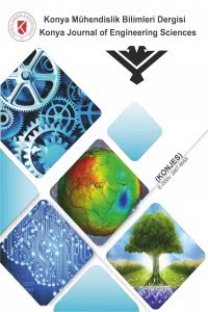Simav (Kütahya) bölgesi kayaçlarının metamorfizması
İnceleme alanında Prekambriyen - Paleozoyik yaşlı metamorfitler yüzeylemektedir. Temelde, Menderes Masifi'nin çekirdeğini oluşturan, migmatit, granitize migmatit, migmatitik gnays ve gnayslardan oluşan Prekambriyen yaşlı Kalkan formasyonu yeralır. Bunun üzerinde uyumlu olarak, yine aynı yaşlı, milonit, milonitşist ve kataklazitlerden oluşan kataklastik zon bulunur. Menderes Masifi içerisinde mütaala edilen Paleozoyik yaşlı Simav metamorfitleri, Prekambriyen'in kayaları üzerine bindirme ile yerleşmiştir. Bu metamorfitler metabazit ve serpantinit arakatkılı mikaşist, muskovitşist ve kuvarsşistleri içerir. Üste doğru Paleozoyik yaşlı, yanal - düşey geçişler sunan, mermerlerden yapılı Balıkbaşı formasyonu; muskovitşist, kuvarsşist ve fillitlerden ibaret Sarıcasu formasyonu yeralır. Kalkan formasyonunun alt seviyelerinde yer alan migmatitlerde metateksit ve diyateksitler ayırtedilebilmektedir. Genelde plütonik görünümlü diyateksitler nebulitik yapıları ile karakteristiktir. Metateksitler ise foliasyon ve şisti özellikleri ile belirgin ve diyateksitlere göre daha iri taneli ve oftalmitik (gözlü) yapılıdır. Kalkan formasyonunun üst seviyelerinde yeralan gnayslarda açığa çıkan stavrolit minerali, migmatitlere geçişte kaybolmakta ve yerini disten ile sillimanite bırakmaktadır. Formasyonun tabanında gözlenen diyateksitlerde ise muskovit + kuvars=> ortoklas + sillimanit ve disten=> sillimanit reaksiyonları belirgindir. Dolayısıyla Kalkan formasyonu Barrow tip almandin - amfibolit fasiyesinde metamorfizma geçirmiştir. Formasyonun üst kesimleri stavrolit - almandin alt fasiyesine karşılık gelirken, alt seviyelerde sillimanit - almandin - ortoklas alt fasiyesi şartları egemendir. Simav metamorfitleri içerisinde biyotit + muskovit + almandin + kuvars + albit (+epidot) ve honblend + albit + epidot (+biyotit + kuvars) parajenezleri gözlenmektedir. Dolayısıyla birimin yeşilşist fasiyesinden epidot - amfibolit fasiyesinin yüksek sıcaklık zonlarına kadar ilerleyen bir metamorfizmaya uğradığı söylenebilir. Balıkbaşı, Sarıcasu ve Arıkaya formasyonları ise yeşilşist fasiyesi şartları altında metamorfizma geçirmiştir.
Metamorphism of rocks in the Simav (Kütahya) area
Metamorphic rocks, Precambrian - Paleozoic in age, crop out in the study area. Precambrian Kalkan formation comprising of migmatite, granitic migmatite, migmatitic gneiss and gneiss which are forming the core of the Menderes Massif, were observed at the base. Cataclastic zone being composed of mylonite, mylonite - schist and cataclastics comes comformably over the Kalkan formation. Paleozoic Simav metamorfics were thrusted outo the Precamrian rocks. It comprises of metabasit and serpantinite interbedded mica - schist, muscovite - schist and quartz - schist. Toward to the top, three formations, all Paleozoic in age, having lateral and vertical transition were observed. These are the Balıkbaşı formation, comprising of marble, the Sarıcasu formation, made up of muscovite - schist, quvartz - schist and phyllite, and the Arıkaya formation composed of crystallized limestone. Metatexite and diatexite occuring at the lower level of the Kalkan formation can be easly discerned. Diatexsite with general plutonic appearance is characteristics with their nebolitic structure. Metatexite present foliation and schisty appearance, is coarser grained and have ophtalrnitic texture. Staurolite appering in the gneiss at the upper part of the Kalkan formation disappear at the transition zone to migmatite, and dişten and sillimanite appear instead. It is clear that the reactions of muscovite+quartz => ortoclase+sillimanite and disten => sillimanite were taken place in the diatexite at the base of the Kalkan formation. Therefore it is concluded that the Kalkan formation was subjected to metamorphism of almandine - amphibolite facies of Barrow type. Staurolite - almandine subfacies at the upper part of the formation and sillimanite - almandine - ortoclase subfacies at the lower part of the formation were effective. Biotite + muscovite + almandine + quartz + albite (+epidote) and hornblende + albite + epidote (+biotite+quartz) paragenesis were observed in the Simav metamorphics. Therefore it can be said that the Simav metamorphics were subjected to prograding metamorphism from greenschist facies to high temperature epidote - amphibolite facies. Balıkbaşı, Sarıcasu and Arıkaya formations were metamorfhized under greenschist facies conditions.
___
- ISSN: 1300-5200
- Yayın Aralığı: Yılda 4 Sayı
- Başlangıç: 2018
- Yayıncı: -
Sayıdaki Diğer Makaleler
Simav (Kütahya) bölgesi kayaçlarının metamorfizması
Digital fotogrametrik iş istasyonları
FERRUH YILDIZ, Murat YAKAR, HAKAN KARABÖRK, H. Murat YILMAZ
Değişken kesitli kirişlerin davranışının teorik ve deneysel olarak incelenmesi
M. Yaşar KALTAKCI, MEHMET KAMANLI
BİLAL TUNÇSİPER, ORHAN CERİT, Ergun KARACAN
Karapınar volkanik agregasından imal edilen hafif betonarme kirişlerin davranışı
Pozantı-Karsantı ofiyonliti' ndeki diyabaz dayklarının jeotektonik anlamı
MELAHAT BEYARSLAN, A. Feyzi BİNGÖL
Kızıldağ ultramafikleri içinde yeni bulunan dünyanın bilinen ikinci büyük olivin yatağı
